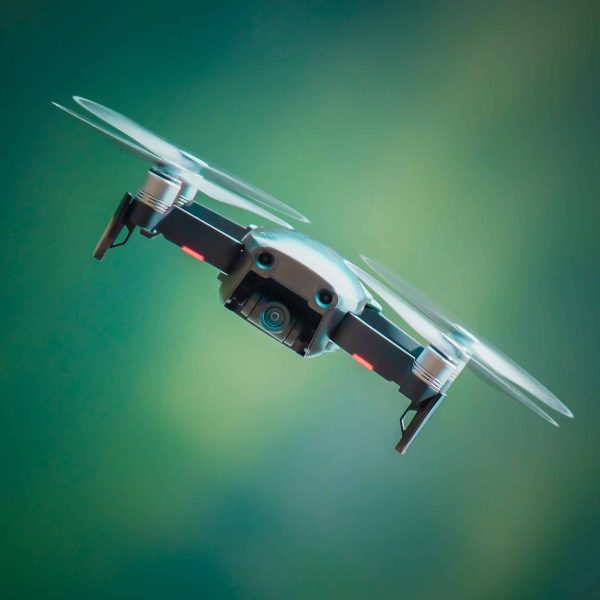In the face of increasingly complex and unpredictable fires, the role of technology in firefighting has never been more critical. From drones and artificial intelligence (AI) to fire simulation software, new technologies are continually emerging, providing firefighters with advanced tools to enhance their firefighting strategies and improve safety. Let’s delve into how these technologies are shaping the future of firefighting.
Drones: Eyes in the sky
Drones, or unmanned aerial vehicles (UAVs), have become a versatile and capable tool in the modern incident commander’s arsenal. They enhance scene size-up and situational awareness in real-time by providing visual aerial surveillance of emergency scenes in locations where topography, building construction, and the presence of hazards make a conventional assessment difficult or even impossible.
Drones outfitted with thermal imaging cameras can detect heat sources, providing information regarding hot spots that can be used to identify hidden fires and to predict future fire behavior. This information is crucial in both structural firefighting and wildfire situations, assisting in the development of effective strategies and tactics while maintaining a safe distance or when a structure is so large as to prevent a 360-degree view.
Drones can also be used to assist in the locating of missing people or animals. Furthermore, drones equipped with speakers can be used in these search and rescue operations to provide lifesaving instructions to victims in dangerous situations.
Artificial intelligence: Predictive power and decision support
AI is rapidly expanding its influence in multiple fields from education to business to public safety. AI-powered predictive modeling can help in proactive fire management, particularly in wildfire-prone areas. It can enhance firefighter’s understanding of fire behavior to help them anticipate fire spread and enable timely evacuations and strategic deployment of firefighting resources.
AI’s role in firefighting doesn’t end when the fire is out. The post-fire analysis is a critical part of improving future firefighting strategies, and AI can significantly aid in this process. By analyzing data from past incidents, AI can identify patterns and trends that might not be apparent to humans.
For example, AI can identify specific weather patterns, time of the year, or vegetation types that are consistently associated with more severe fires. These insights can inform fire management strategies, leading to more effective prevention and mitigation measures.
Moreover, these patterns and trends can also be integrated into training programs. AI can help devise realistic and challenging training scenarios based on real-world data, allowing firefighters to better prepare for the types of fires they’re most likely to encounter.
Fire simulation software: Supports Recognition Primed Decision Making (RPD)
RPD is the unconscious process employed by experienced incident commanders who must make rapid, time-critical decisions with limited information. The problem is that most ICs do not get enough actual fireground experience to adequately build and maintain their decision-making skills. Simulation software, like SimsUShare, has revolutionized firefighting training by filling in the experience gap. Through the creation of realistic, interactive scenarios, simulation software provides a safe environment for firefighters to hone and practice their size-up skills and decision-making abilities in a variety of situations similar to how pilots are trained in flight simulators.
This type of training is invaluable for preparing ICs for real-world incidents, where every decision can have significant consequences. With the ability to replicate different types of fires and environments, simulation software allows firefighters to experience a wide range of scenarios, from residential fires to high-rise emergencies and wildfires.
Moreover, fire simulation training promotes a culture of continuous learning, providing firefighters with immediate feedback and the opportunity to learn from their mistakes in a risk-free setting. Scenarios can rapidly and easily be repeated providing the necessary practice repetitions to integrate real-time feedback, correct previous mistakes, build strong habits and routines, and finally to establish confidence in making rapid decisions with limited information in a high consequences environment.
Looking to the future of firefighting
As we look to the future, it’s clear that technology will continue to play an important role in firefighting. The integration of drones, AI, and simulation software has the potential to not only enhance the effectiveness of fire response but also contribute to the safety of both the public and firefighting personnel.
However, while these technologies offer significant advantages, they are tools to supplement, not replace, the knowledge, skills, and ability of firefighters. As fire departments continue to adopt and adapt to these technological advancements, the focus should be on leveraging the tools to augment human capacity and decision-making in firefighting operations. The future of firefighting is a blend of advanced technology and human skill, working together to protect our communities.
If you’re interested in an easy-to-use fire simulator for training your incident commanders and company officers in the art of decision-making, you need SimsUshare. You can request a demo to let us show you how we can help you take your training to the next level with this exciting piece of technology.

